French carmakers never fail to surprise.
Like when Citroen wheeled out the Cactus a few years ago, full of quirks and character. However, it was pricey and the powertrain was at odds with local preferences but it was treading down the right path with its urban crossover features. And given the way of the world’s car buying trends, you’d have thought for certain the new model would continue along that route.
So it was somewhat surprising to see the new C4 Cactus being renewed as a hatchback. However it does kill two roosters with one rock, replacing both the regular C4 hatch and the Cactus in the line-up. There is only so much one can do during a 35-hour working week, after all. Think Cactus, and a feeling of comfort is probably not the first thing that springs to mind. You certainly wouldn’t want to sit on one for instance, but Citroen reckons its new C4 Cactus (C4C henceforth) is a comfort master.
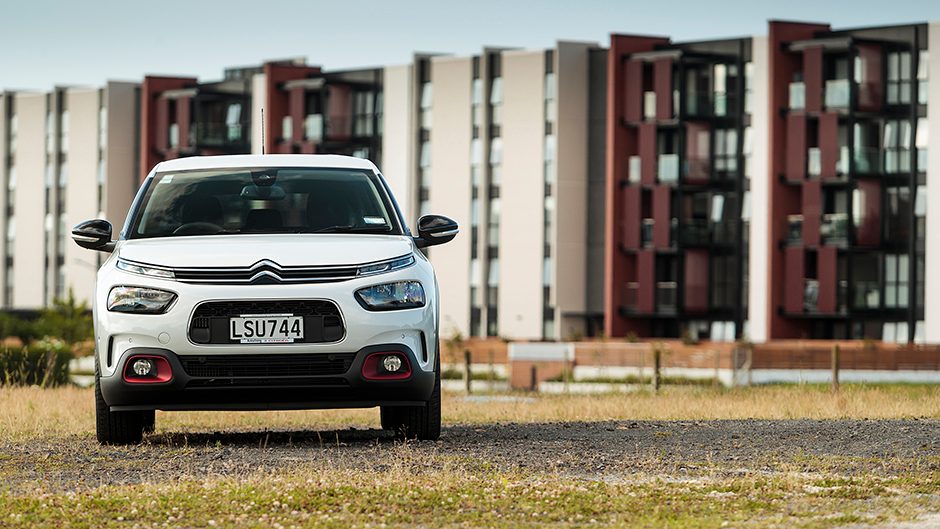
It has been designed using the company’s ‘Advanced Comfort Programme’ which aims to deliver exactly that. It’s not about racing to a destination but getting through the everyday stuff in total comfort. So how does it fare? The new C4C still uses the old car’s PF1 platform but gains new suspenders with Citroen bolting up its Progressive Hydraulic Cushions at each corner. These sure sound impressive but there is no interlinked, hydropneumatic, self-levelling tech here.
Rather these cushions are essentially sophisticated passive dampers. Inside the shock tube Citroen says it has included two ‘hydraulic stops’, one at the top of the piston stroke, the other at the bottom. The damping forces in the middle of that stroke, or the everyday ride area, are all gooey for a pleasant progress, while those hydraulic stops are there to take the force out of the big hits like potholes and speed bumps.
And this does ride nicely for a hatch with an otherwise conventional set-up, including a torsion beam rear. But it’s over those nasty bumps that this shines, with an ability to soak up the knocks without upsetting those in the cabin, and this helps deliver that ‘advanced comfort’ Citroen is on about.
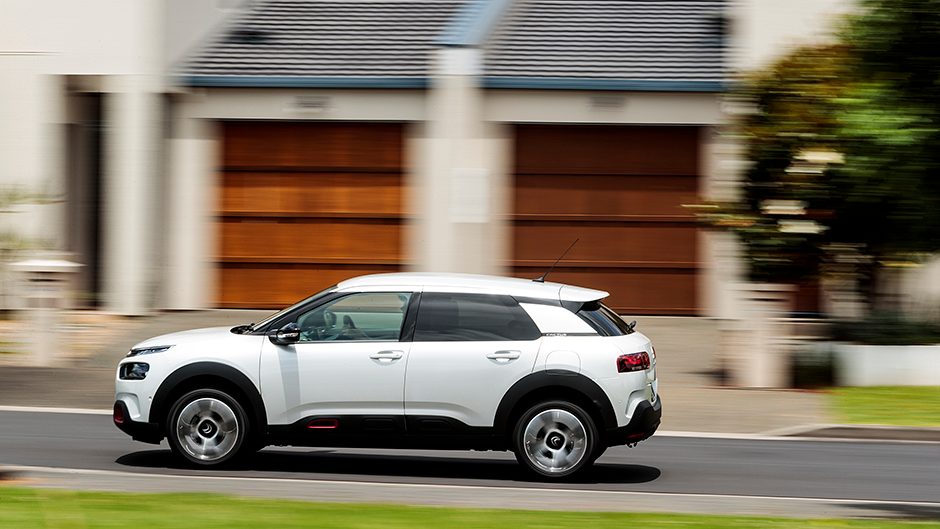
Sounds like a recipe for a wallowing ride on the highway, but they’ve managed to give it a dose of control too. There is body roll and the rear end can move about when encountering mid-corner bumps but the C4C holds on okay through the bends. The steering, while light and prone to the odd hit of rack rattle, is at least accurate.
Bump absorption is top notch, as you’d hope, and though there is some tyre noise at 100km/h on coarse chip, it’s otherwise a comfortable hatch in which to cruise main highways. It would be easier still if they’d included active cruise but it does feature AEB, lane departure warning, blind spot minding, speed sign recognition and driver attention alerts. Adding ease to your commute is the torquey engine, PSA’s 1.2 turbopetrol teaming up with the six-speed auto to good effect again.
This is relatively quiet in operation, quick to deliver the 205Nm of torque, and the auto is smooth with the changes. The idle-stop system is fairly persistent while the button to deactivate it requires a couple of taps on the touchscreen to locate. Occasionally the auto decides it can pull away in second after a brief pause, which is about the only time the powertrain feels inadequate.
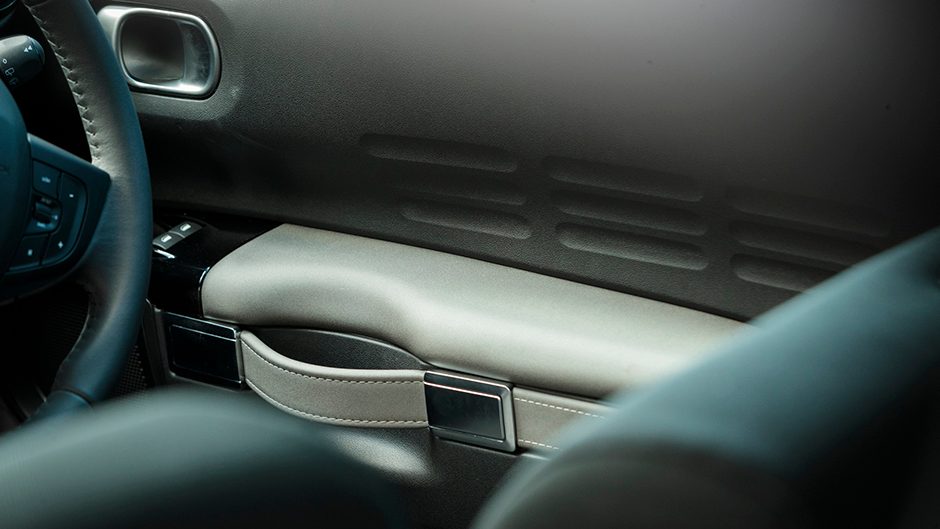
It’s pretty reasonable on gas use, the long term average of this car sitting at 6.7L/100km, the official average being 5.3. For size, the C4C fills about the same amount of car park space as the C3 Aircross, though the C3A is taller. The C4C takes on a look similar to the regular C3 hatch with its lighting stacks up front and the Chevrons that stretch across the face. There’s loads of plastic cladding along the flanks while the Airbumps, which the Cactus made famous, have been minimised and cling to the lower edge of the doors.
Originally these were intended to offer protection against car park dings but placed where they are here, they are relegated largely to a cosmetic role. However, these do add to an overall look that is anything but ordinary, and they say there are some 81 exterior colour combinations available.
Inside, it’s a return of the luggage- inspired decor with door pulls fashioned like the handle on a fancy suitcase, so too the treatment of the hatch on the glovebox. Pity there’s swags of hard black plastic about too. It’s a cabin free of clutter though, with the central touchscreen in charge of most functions, and the simple digital instrumentation relays nothing but the essentials. Like your smartphone, the touchscreen needs a couple of taps to access the right menu, but is quick to respond while the layout is both attractive and easy to navigate.
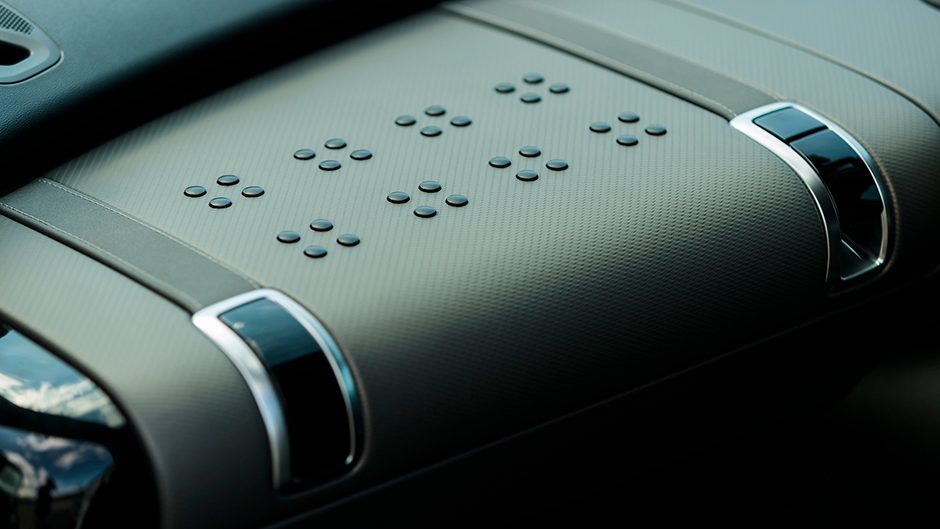
There are also quite a few things you can do via the voice control. Ask it something tricky and it’ll pause as it tries to decipher the Kiwi accent, takes a guess and gets it completely wrong. There’s sat nav as standard and you can also circumvent it all by plugging in your smartphone. A smart key helps ensure an easy entry, as does a raised seat height, while the pews themselves are dubbed the Advanced Comfort Seats.
These get an extra helping of foam padding to give them a more sumptuous feel, and they are couch-like but are a little lacking in form-fitting support during a longer stint behind the wheel. The start button is a bit of a stretch for the driver, positioned on the lower left of the dash. Perhaps it’s there to help get you limbered up for the drive.
At least this is a Citroen with a decent sized glove compartment thanks to the airbag in the roof mechanism, though the rest of the storage spots are small on literage. The rear seat is also generous on the soft padding front, though they haven’t been so giving with the legroom, it being on the tight side for adults. And, like the last one, you can’t lower the rear windows but rather you can only crack them open slightly from the rear.
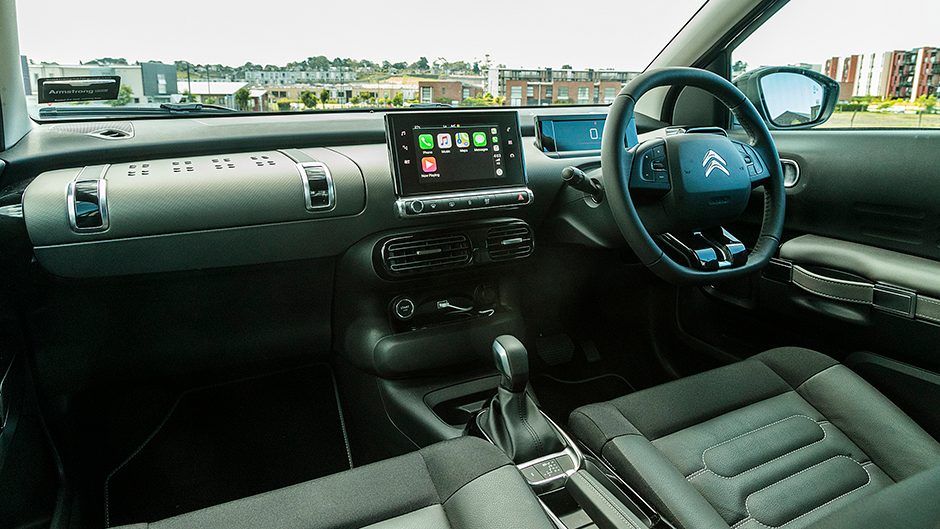
There’s a good sized boot however with a low-set floor and it’s reasonably wide. Plus, there’s split folding and a full size spare.
C4C has the usual three year/100,000km warranty period and Citroen offers a service deal for $1190 covering three years or 60,000km, the service intervals set at 12 months or 20,000km.
There’s just one C4C variant, priced from $35,990, with only a few options on the menu including a glass roof, metallic paint and three variations on the interior. That puts it in the middle of the small car buying frame and while there are many nameplates to choose from, the C4 Cactus is an alternative to the norm with its unique style and take on comfort.
| Model | Citroen C4 Cactus | Price | $35,990 |
| Engine | 1199cc, IL3, T/DI, 81kW/205Nm | Drivetrain | 6-speed auto, front-wheel drive |
| Fuel Use | 5.3L/100km | C02 Output | 120g/km |
| 0-100km/h | 10.29sec | Weight | 1200kg |


